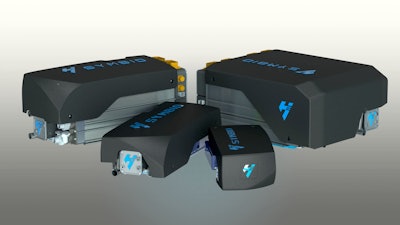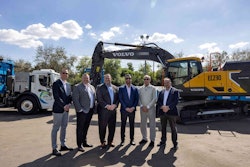
A memorandum of understanding concerning the joint development of fuel cell systems for mobilities including construction machinery has been signed between Kawasaki Heavy Industries and Symbio.
The intent is to combine Kawasaki’s expertise with high-pressure hydrogen gas valves with Symbio’s knowledge and experience with hydrogen fuel cell technology to further accelerate their hydrogen business initiatives and contribute to the achievement of global carbon neutrality and decarbonization.
Leveraging Kawasaki’s network in the construction machinery market, both companies will explore the application and development of more efficient and low-carbon power fuel cell systems for construction equipment solutions.
Since unveiling its first excavator in 1960, hydraulic components produced by Kawasaki have been utilized by numerous construction equipment manufacturers. Similarly, the Japanese company’s high-pressure hydrogen gas valves for fuel cell vehicles are installed in multiple car and industrial vehicle manufacturer’s products.
The France-based Symbio, a jointly owned venture between Faurecia, Michelin, and Stellantis, has more than 30 years of experience in the development of fuel cell systems and vehicle integration. Its hydrogen fuel cell systems have been supplied for commercial light-duty, medium, and heavy-duty vehicles through numerous major automotive OEMs and other mobility applications.
In 2023, Symbio opened SymphonHy, the largest integrated fuel cell production site in Europe. It is expected to have a capacity of manufacturing 50,000 fuel cell systems per year by 2026 and a projected rate of 200,000 StackPacks annually by 2030.
The StackPack fuel cells are designed to meet the needs of multiple mobility applications and are expected to be further developed to meet the needs of construction applications.










